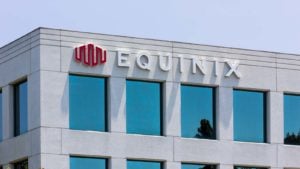Last year was a tale of two halves for dividend equities. Owing to the novel coronavirus pandemic, the first half of 2020 was chock full of payout cuts and suspensions by S&P 500 member firms, but dividends rebounded mightily in the second half of the year, indicating that many of the top stocks for 2021 are dividend payers.
The fourth-quarter trajectory of S&P 500 payouts indicates that the darkest clouds of the coronavirus cuts have passed. And dividend investors could be in for better things this year.
“Indicated dividend net changes (increases less decreases) for U.S. domestic common stocks increased $9.5 billion during Q4 2020, compared to a decline of $2.3 billion in Q3 2020, and a gain of $10.6 billion in Q4 2019,” noted the S&P Dow Jones Indices. “For Q4 2020, aggregate increases amounted to $13.9 billion, up 64.2% from the $8.4 billion increase of Q3 2020 and up 15.7%, from Q4 2019’s $12.0 billion. Aggregate dividend cuts decreased 59.8% to $4.3 billion from Q3 2020’s $10.8 billion in cuts, and was up 221% from the $1.3 billion in cuts for Q4 2019.”
Adding to the case for dividends in 2021 are recent dividend futures data, which, as Goldman Sachs notes, implies those contracts could bring cuts. But the bank says that’s a case of mispricing and that dividends should rise this year.
With that opportunity ahead, here are some of the top dividend stocks to consider for 2021:
- Apple (NASDAQ:AAPL)
- JPMorgan Chase (NYSE:JPM)
- Western Union (NYSE:WU)
- Microsoft (NASDAQ:MSFT)
- VICI Properties (NYSE:VICI)
- Equinix (NASDAQ:EQIX)
- Texas Instruments (NASDAQ:TXN)
Dividend Stocks: Apple (AAPL)

Apple’s dividend yields just 0.64%. In this environment of historically low interest rates and depressed yields, the company doesn’t standout on the basis of yield. However, it is one of the rare examples of a name that’s legitimately a growth stock with a solidified, growing dividend.
In bygone eras of investing, technology companies didn’t rush to pay dividends because it was supposedly a sign that growth was behind them. That’s not the case with Apple. A relatively new participant in the dividend landscape, AAPL stock has consistently surged since it became a dividend payer less than a decade ago. As of Jan. 15, the company has a market capitalization of $2.15 trillion.
The combination of 5G iPhone sales, a bigger push into high margins, revenue-steadying subscription-based services and its robust entertainment arm make Apple a top stock for 2021. For its most recent quarter, the company had $191.83 billion in cash on hand — more than enough to support and grow the dividend this year.
JPMorgan Chase (JPM)

For a good portion of 2020, allocating to bank stocks, including JPMorgan Chase, tried investors’ patience. The group fell out of favor because of low interest rates, but that wasn’t all. Shareholder rewards (the one benefit of being involved with these names) suffered a blow when the Federal Reserve told the largest banks to scrap buybacks and that there would be no payout growth in 2020.
Rather, JPMorgan had to set aside large sums of capital to cover bad loans due to the fragile Covid-19 economy. On that note, the sour loan situation didn’t turn out to be as bad as the Fed expected. That could mean at some point in 2021, JPMorgan and rivals will be allowed to repatriate that cash back into earnings.
There are reasons for optimism when it comes to the JPM stock dividend, including the Fed relenting on the buyback freeze last month. JPMorgan seized on that announcement, swiftly saying it will repurchase $30 billion of its shares.
Western Union (WU)

Dividend stocks are often associated with large- and mega-cap companies, but some smaller stocks have enviable payout track records. That group includes money-transfer provider Western Union. The company has a $8.95 billion market cap and yields 4.16%. This results in an annual payout of 90 cents per share, up from 24 cents a decade ago.
WU stock was a sluggish performer last year, and its prosaic business doesn’t seem to jive with the current level of sexiness ascribed to the fintech revolution. But Western Union has digital capabilities of its own that could act as catalysts for the sleepy stock this year.
“Expanding real-time payout capability is a key focus of the Company’s digital growth strategy which centers on growing its industry-leading digital services offered through westernunion.com and digital partnerships,” according to the company. “Together, the two growth drivers grew digital revenue 45% year-over-year in the third quarter of 2020, representing 21% of Western Union’s consumer business and trending at an annual rate of over $900 million.”
Microsoft (MSFT)

Microsoft’s dividend history is longer than Apple’s. But they are both prime examples of growth companies that offer much more than just a dividend. Rather, they are growth names with the ability to support and grow the payout while delivering impressive levels of capital appreciation.
While so many energy, consumer discretionary and real estate companies — just to name a few sectors — were cutting and halting dividends in 2020, Microsoft grew its payout. Last September, the tech giant raised its quarterly payout to 56 cents a share, a 10% increase. The company finished 2020 with $136.52 billion in cash on hand, so future dividend growth is easily supported.
Of course, Wall Street demands more of MSFT stock than dividend growth. And investors should, too. Fortunately, the company can execute. In the September quarter, Microsoft’s Azure cloud business, the second-largest of its kind, grew 48%. While the PC market could ebb a bit this year, Office 365, particularly the version including Teams, adds another growth driver for the company.
VICI Properties (VICI)

Real estate investment trusts (REITs) were among the most egregious offenders when it came to dividend cuts in 2020. But VICI Properties didn’t get that memo, raising its payout 11% for its third consecutive hike.
VICI is a gaming REIT, meaning it’s in the casino real estate business. To that end, it’s worth noting the company is the property owner of Caesars Palace on the Las Vegas strip, among dozens of other domestic gaming venues. However, investors should also note that Caesars Entertainment (NASDAQ:CZR) is the REIT’s biggest client, and Caesars has a deep portfolio of regional casinos. Translation: VICI is significantly less Vegas-dependent than meets the eye. In fact, just about a quarter of its rental income was generated on the strip in the September quarter.
VICI has some growth levers to pull as 2021 unfolds. Caesars is likely to divest several properties around the country to generate cash. VICI is the likely suitor for some of those venues, as it holds rights of first refusal for some assets on the strip. Additionally, VICI has served as partner for smaller casino operators looking to scoop regional venues, which leads to new rental income.
Equinix (EQIX)

With a current price around $700, data-center REIT Equinix isn’t for everyone. EQIX is in the midst of a pullback that’s seen it retreat 17% from its 52-week high. But that could be a buying opportunity for investors.
Data centers house servers and networking gear. And with cybersecurity and cloud-computing spending forecast to surge again this year, the case for EQIX stock remains strong. Plus, Equinix has recent history on its side, easily topping broader real estate benchmarks for five years. There are plenty of avenues for growth in 2021.
“Interconnection remains strong and, in our view, will continue to be the primary driver of Equinix’s continuing strength. The firm added eight new cloud on-ramps in the quarter, bringing its total to 160 and, resulting in a 42% market share in its footprint according to the company,” according to Morningstar.
Texas Instruments (TXN)

Semiconductor maker Texas Instruments is one of the original tech dividend names, initiating its payout in 1962. That’s ancient in tech dividend terms. More importantly, the payout grew at a compound annual growth rate (CAGR) of 27% from 2004 to 2019. 2020 marked the 17th consecutive year in which the payout grew.
Like many of its tech dividend counterparts, Texas Instruments has growth outlets despite being a mature company. Its battery management system (BMS) makes it a credible electric vehicle (EV) derivative play. The BMS is used by EV manufacturers to “reduce the complexity of their designs, improve reliability and reduce vehicle weight to extend driving range.”
Design and extended range are two of the big hurdles that, if cleared, could rapidly speed EV adoption. There are more glamorous semiconductor stocks, but TXN is a way for conservative investors to get some EV exposure while getting compensated. That’s no small feat given the scarcity of dependable dividends in the EV arena.
On the date of publication, Todd Shriber did not have (either directly or indirectly) any positions in any of the securities mentioned in this article.
Todd Shriber has been an InvestorPlace contributor since 2014.
